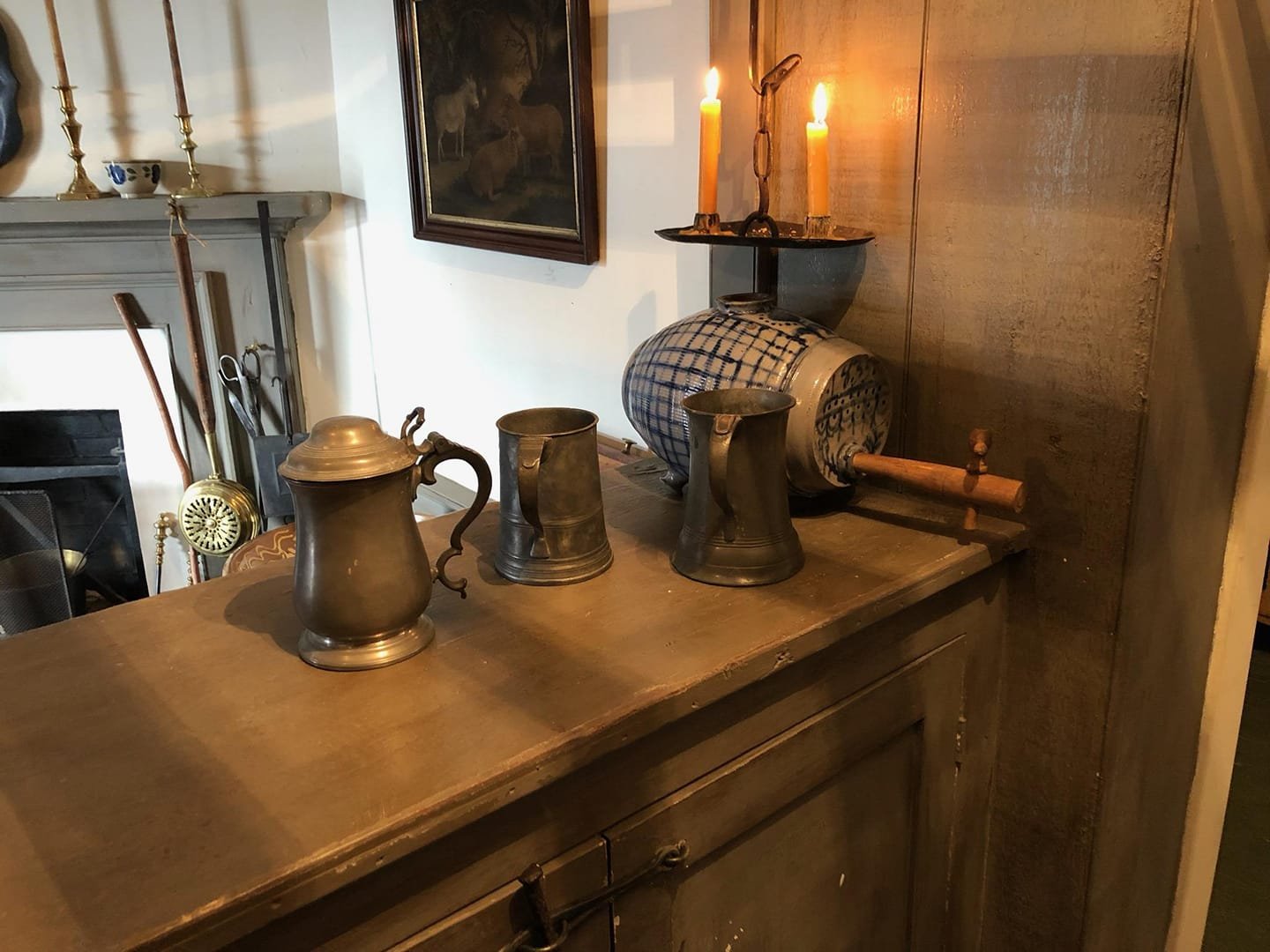
A Frontier Tavern
In 1808 Benjamin Overfield opened a tavern on the bank of the Great Miami River. The tavern soon became the center of the town's social and civic life.
In the summer of 1807, the site of Troy was selected as the county seat of newly formed Miami County and platted by Andrew Wallace later that year. Benjamin Overfield purchased Lot 2 and completed the construction of his tavern, believed to be the first house constructed in the new town, by fall 1808. On September 13, 1808, Overfield and his competitor, Teagel Trader, both received tavern licenses. Licenses were granted annually.
Court met for the first time in an upstairs room at Benjamin Overfield’s tavern on November 5, 1808. It was soon to become the regular meeting place. According to the Commissioners records of December 16, 1808, it was “ordered that the court to be held in Miami County shall be held in the house of Benjamin Overfield in Troy until a courthouse is built; he has agreed to furnish a room for the court to sit in, gratis, during the time or term aforesaid.”
Meeting places in the early days were scarce and Overfield’s Tavern, with its upstairs room, was used for forums and political meetings, auctions, Masonic Lodge meetings, and other public gatherings. The tavern was also used for prayer meetings, a peculiar use of a drinking establishment.
In 1811, court was moved to an second-story room above the log jail on the southeast corner of West Main and Plum Street. This was considered the first courthouse in the county to be built for that purpose. The first session of court was held there on August 5, 1811.
In 1815, construction began on a new brick courthouse in the center of the Public Square, although it was not completed until 1824. After a fire ravaged most of the log houses along Water Street that same year, Overfield moved his tavern business to a wooden building on the northwest corner of the Public Square in part to be closer to the new courthouse. Fire again ravaged the town and Overfield lost his second tavern building, relocating to the corner of West Main and Cherry Streets where the former Masonic Lodge now stands. Here he operated the Crosskeys Tavern until his death on July 20, 1831.
The original Overfield Tavern on Water Street continued to be operated by Benjamin’s brother-in-law and sister, David and Elizabeth Overfield Daily. Upon Benjamin’s death, his widow, Rebecca Sumption Overfield, bought the building from Daily and operated the tavern for several more years before moving to Indiana to be closer to family.


